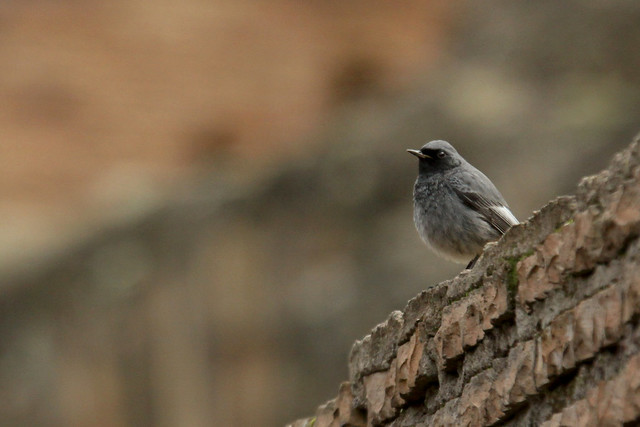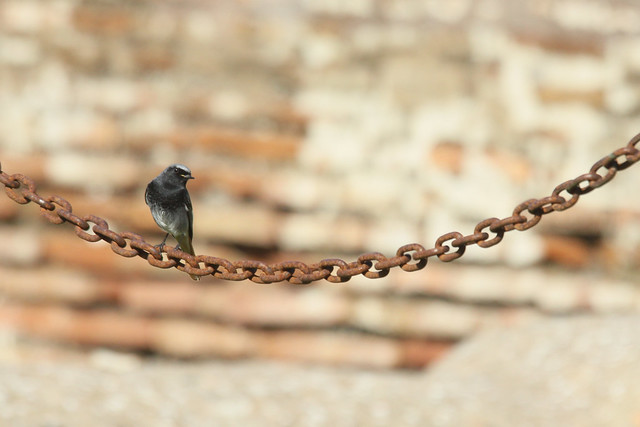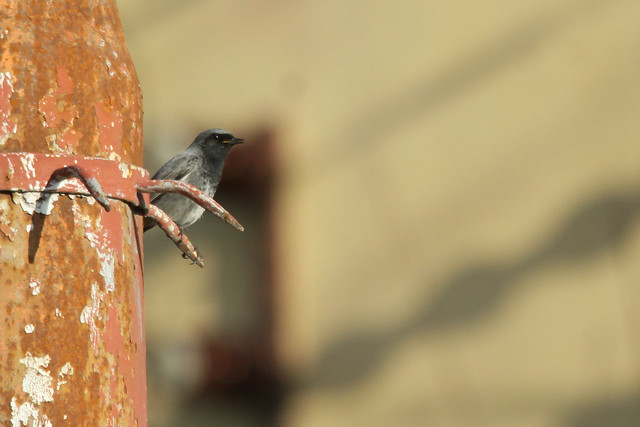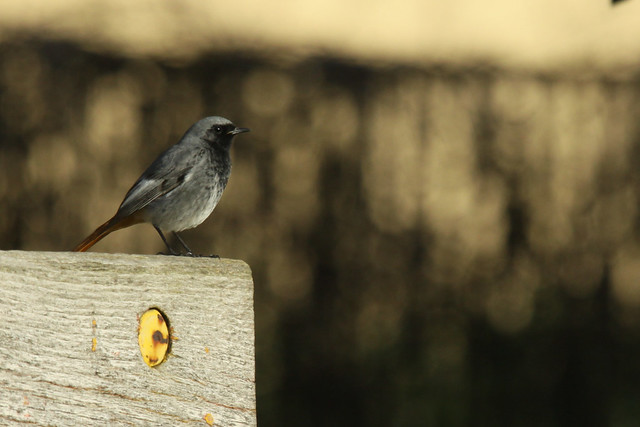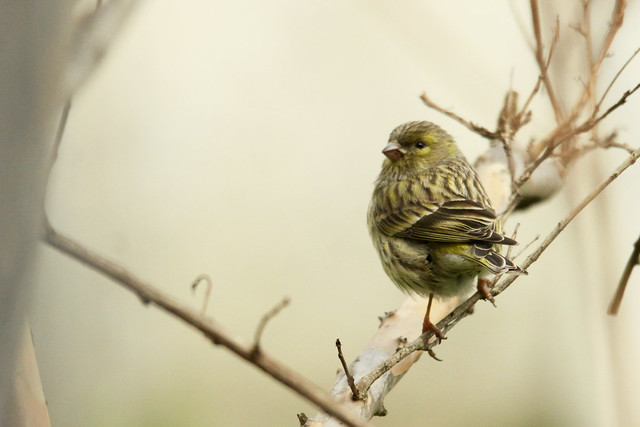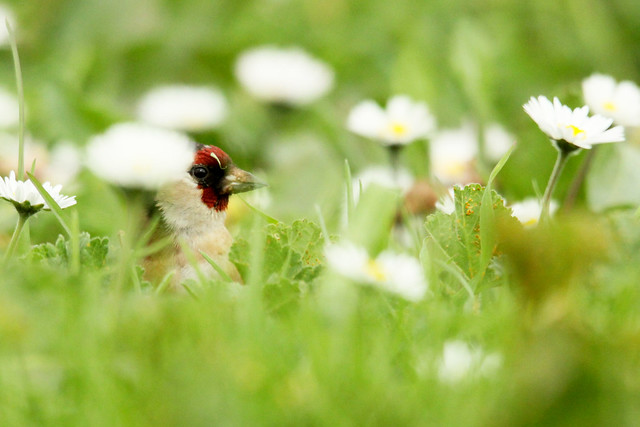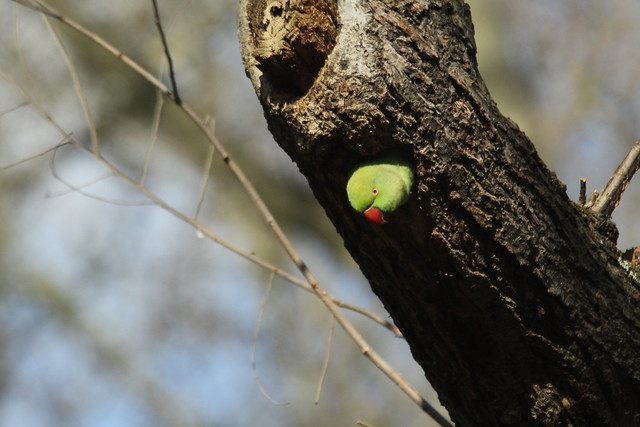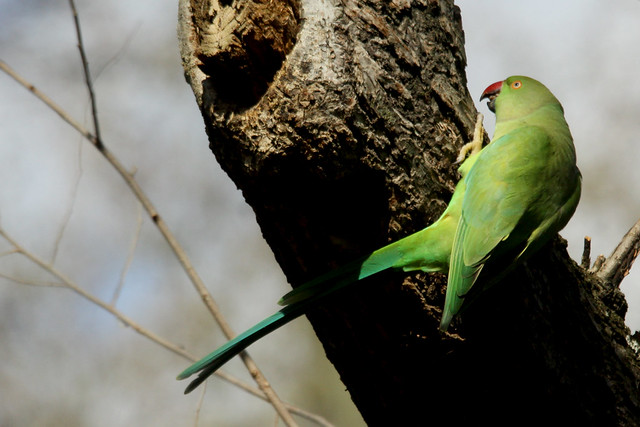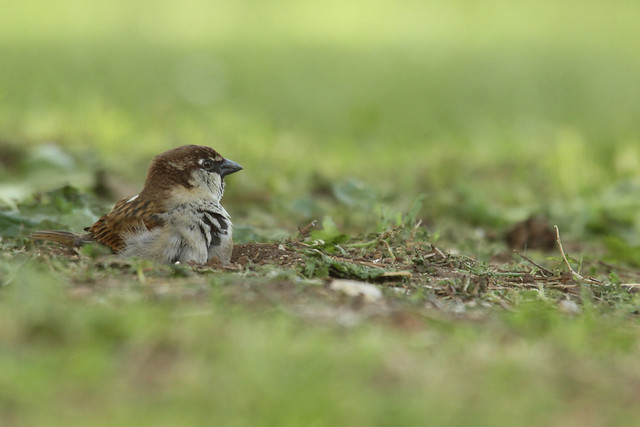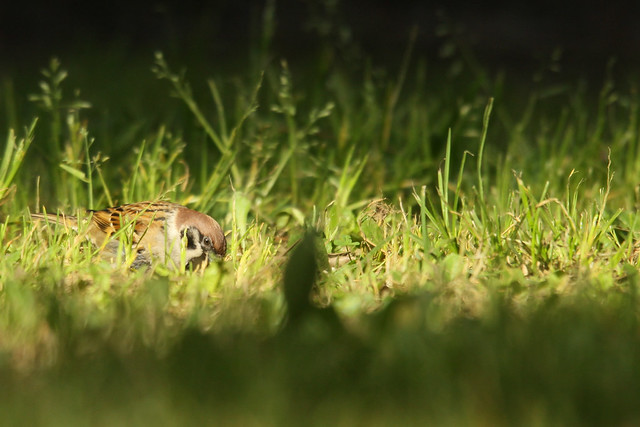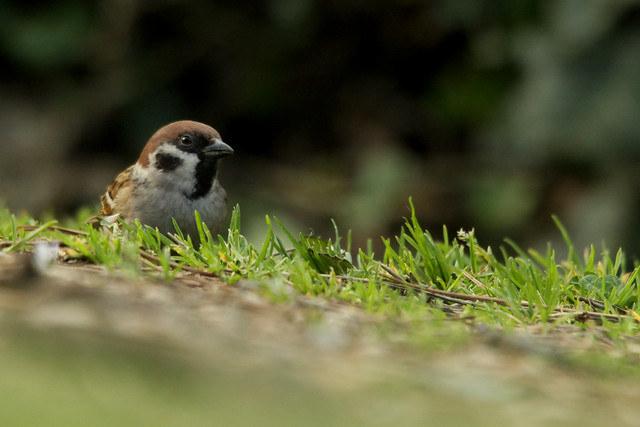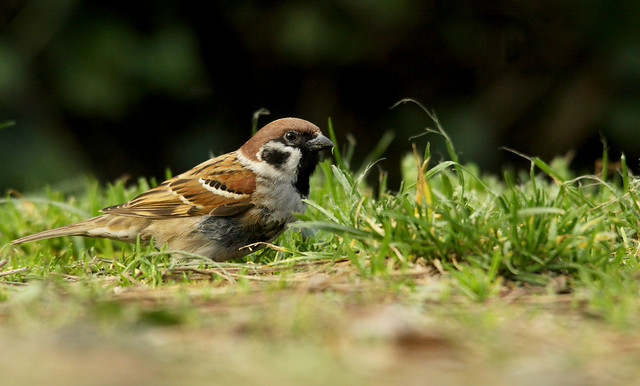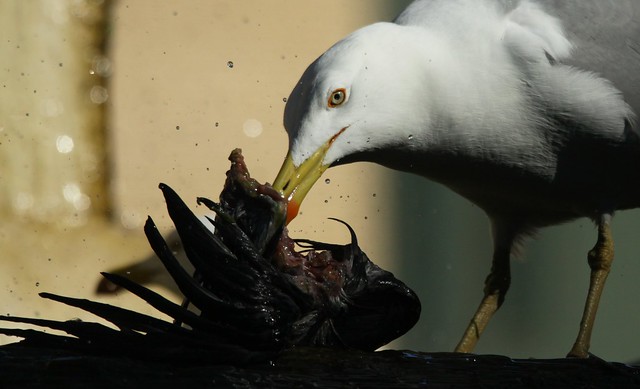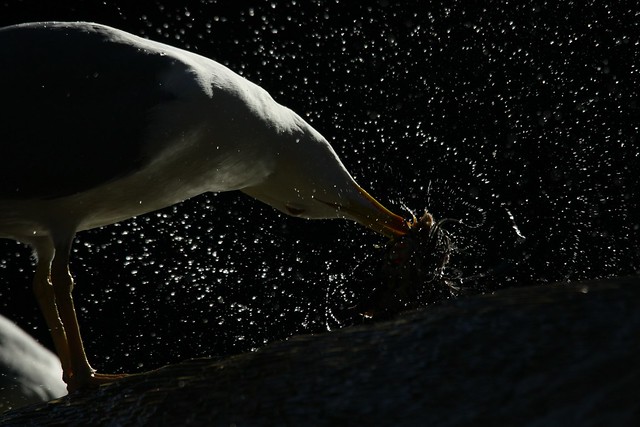
But before long the outlying birds reached my position, prone as I was on the muddied sands of the estuary edge. The first to arrive are nearly always the Ringed Plovers, who neatly separate them off from the flock as a whole and feed on the peripheral edge closest to the shore...

As if it wasn't Autumnal enough, the big clouds of rain that pressed ominously down opened and drenched me and the birds...
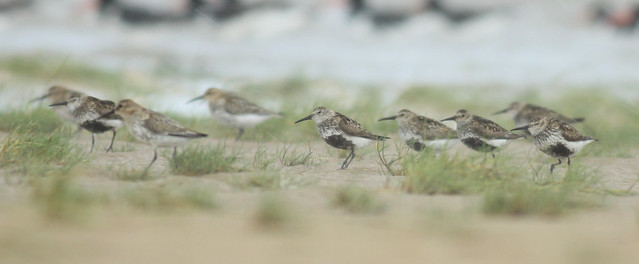
The showers were intermitent, so by messing with shutter speeds I achieved a number of different shots of the birds in many different conditions...
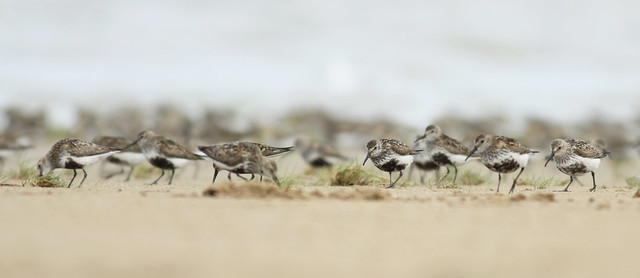
The odd dogwalker always disrupts proceedings, but the birds always return to the same few positions...

...the wind also blew loose sands at the birds (and into my lens!), which- to judge from their expressions- they weren't too keen on...
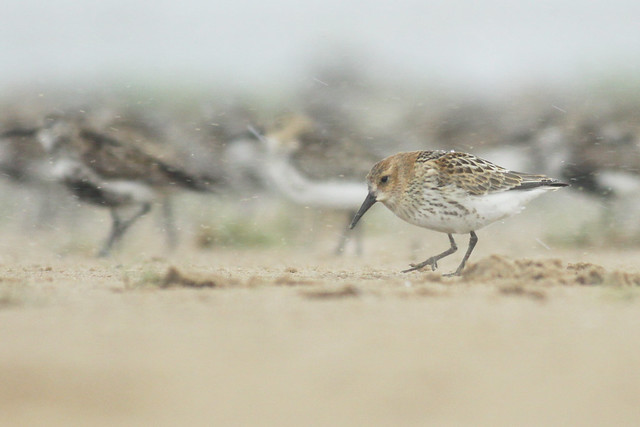
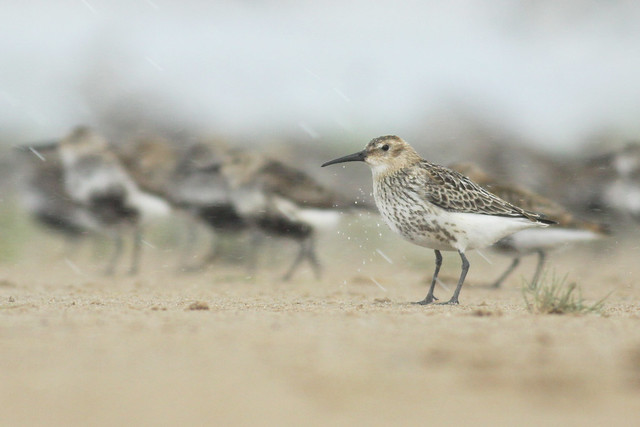
As the tide drew closer, the birdlife changed and Dunlin like this became easier to snap. This one was ringed high up on the leg with a BTO ring, it would be awesome to see where it was ringed and where it breeds, my bet's on the Shetland Isles!
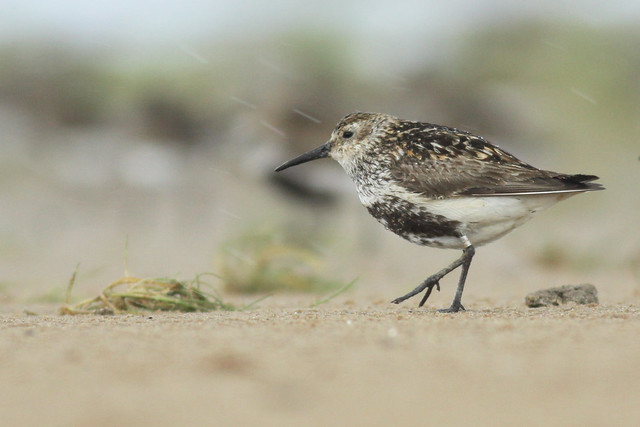
This fine Ringed Plover had retained almost full summer plumage, and was easy to pick out of the flock...
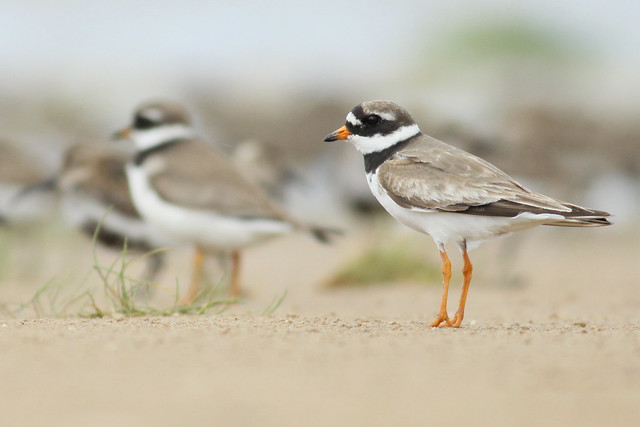
This Dunlin was an amazing individual, as it had no feet and one leg. It was equally harrowing and hilarious watching it trying to land on the loose sand at the water's edge, trying to balance it's weight on it's pegleg...
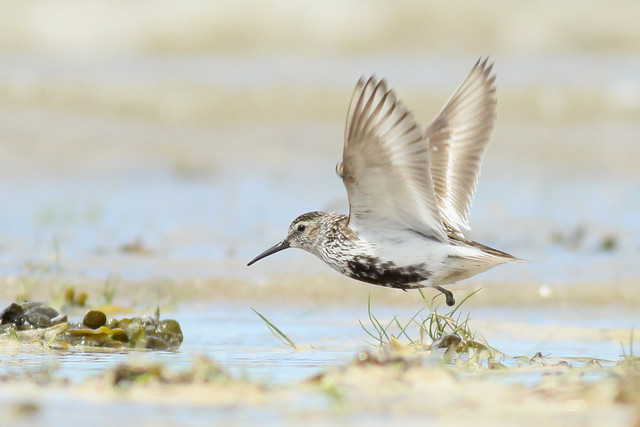

As high tide approached, the birds started to calm their feeding and rest a little...

As mentioned previously, it's the Plovers that tend to inhabit the shoreward side of the flock. The seaward side is primarily occupied by Sandering (as well as the ubiquitous Dunlin), the former of whom are constantly running in and out of the flotsam like tiny clockwork toys. This one stopped long enough for a snap...
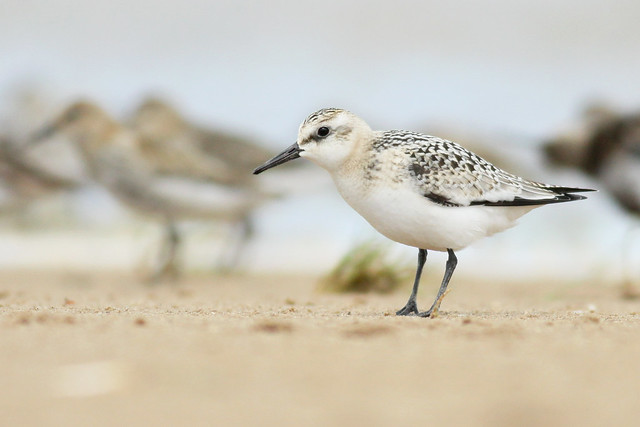
I really love this pose...
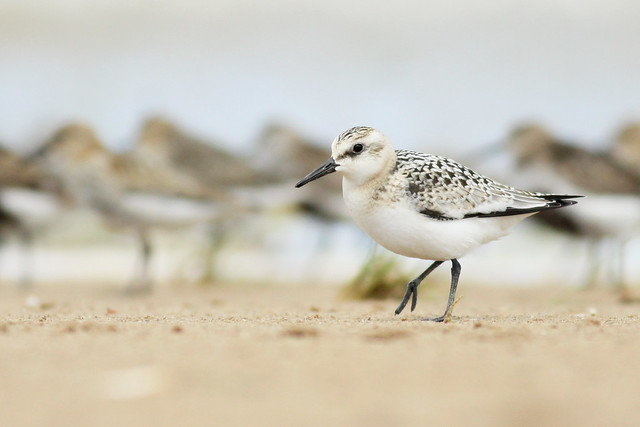
As the tide continued in, the birds started to wheel high above the sands, and as they settled to landing again I tried to catch that moment the air brakes go on and the undercarriage is deployed...
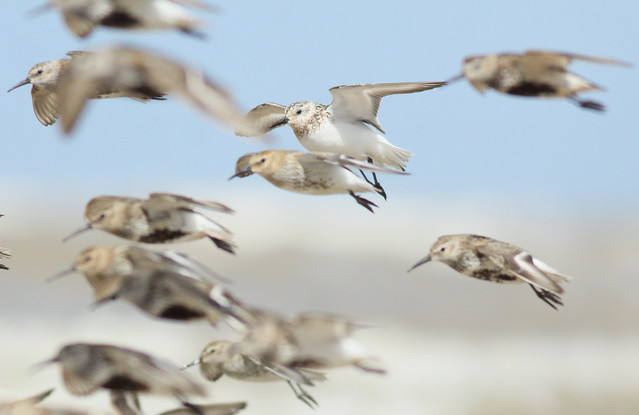
...Some are quicker on the uptake than others, and some come round for a second pass...

It's amazing to see the flock mentality, it's almost like an elastic band; the birds wheel out to one side, and if a sufficient number leaves then the band breaks and the birds start to move off. If too few leave, then the birds return to their feeding. I wonder if there's a specific threshold, a miniumum size for a splinter flock if you will...
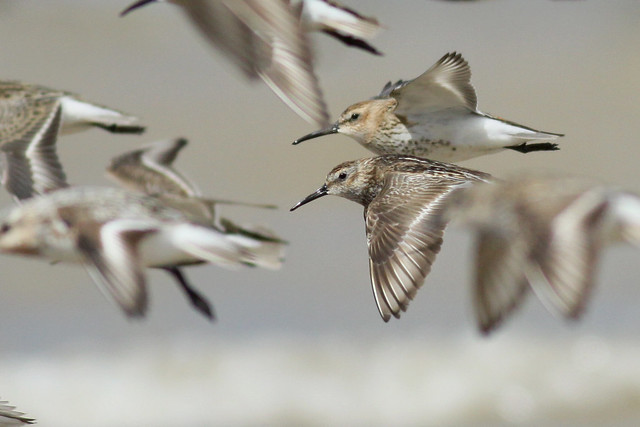
...But enough of that, it's enjoyable enough just watching the colours change as the birds wheel..
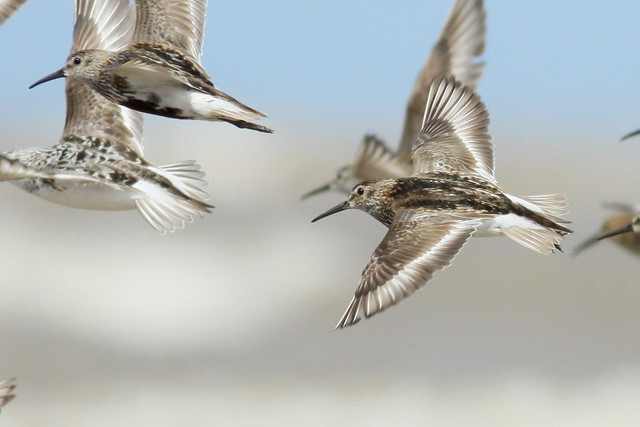
This sea of golden birds will soon be silver...
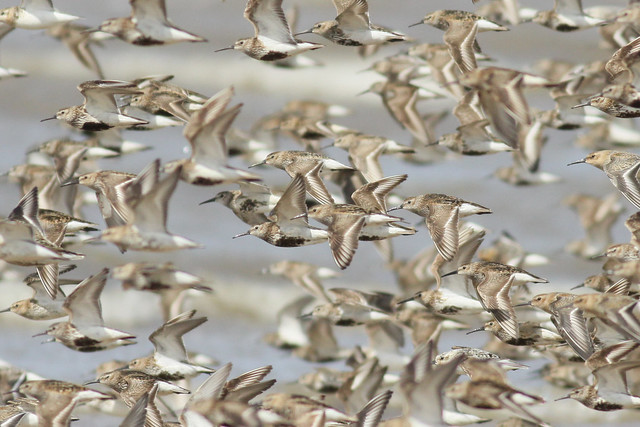
And so another season starts, and I'm not just talking about the football. Though that's always pretty exciting.

